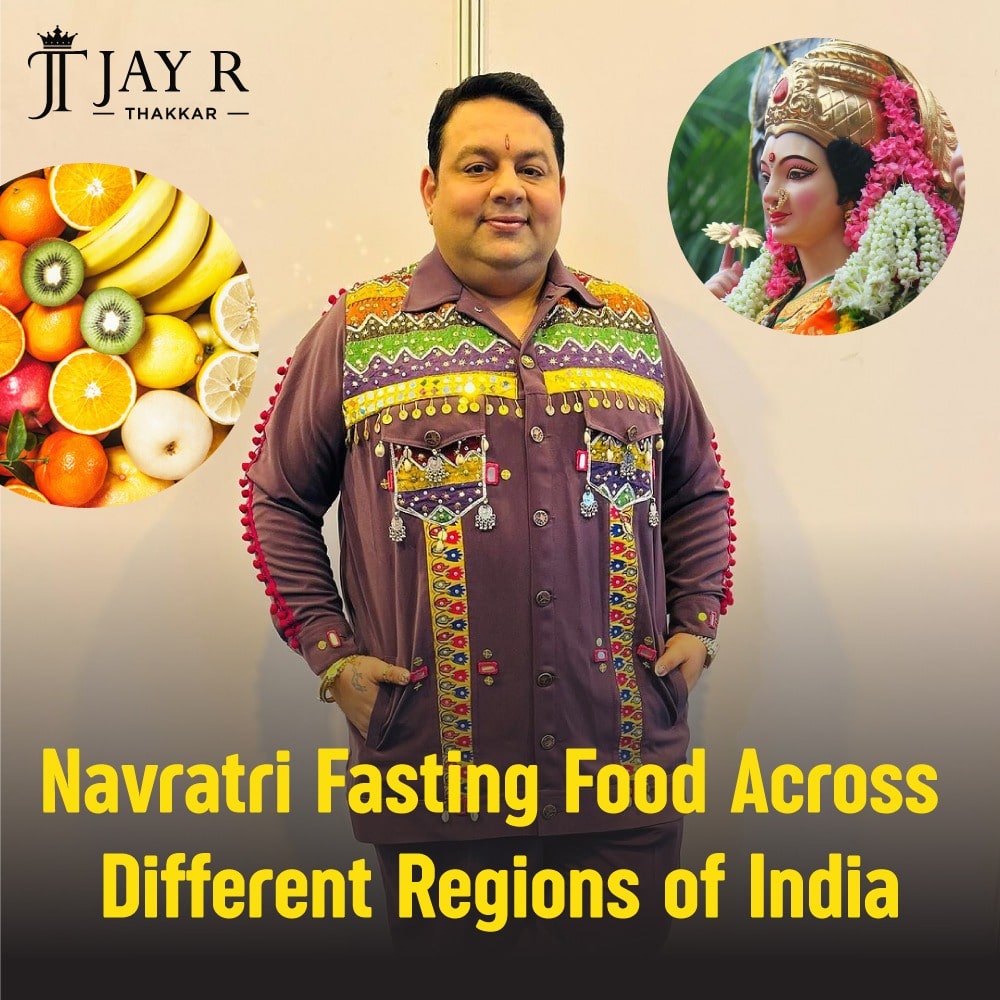
- By: admin
- Comments (0)
- Oct 22
Navratri is one of the most celebrated festivals in India, dedicated to the worship of MaaDurga. Along with the energetic Garba and Dandiya performances that light up the evenings, Navratri is also a time for spiritual reflection and fasting. Fasting during Navratri is an important tradition observed by millions of Hindus, and the food consumed during this period varies across different regions of India.
Food for Navratri Fasting in India is usually simple, sattvic, and made with ingredients that are light on the stomach while maintaining energy levels throughout the day. Each region has its unique take on fasting foods, and people follow specific dietary rules during these nine days. Let’s take a look at what people across various parts of India eat during Navratri fasting.
North India
In North India, Navratri fasting is taken seriously, and people avoid grains, regular salt, and many spices. Instead, they consume foods made from buckwheat flour (kuttukaatta), water chestnut flour (singharaatta), and amaranth flour (rajgiraatta). Popular fasting dishes include:
- Kuttukipuri – A fried bread made from buckwheat flour.
- Alookisabzi – A simple potato curry made with minimal spices.
- Sabudanakhichdi – A light and filling dish made from sago pearls (sabudana), peanuts, and mild spices.
- Vratkechawal – Rice made from samak (barnyard millet) is eaten as a substitute for regular rice.
- Makhanakheer – A sweet dish made from puffed lotus seeds cooked in milk.
These dishes are easy to digest, and most people also use rock salt (sendhanamak) instead of regular table salt.
Western India
In Western India, particularly in Gujarat, Navratri is a time of vibrant celebrations, with Garba and Dandiya taking center stage. Along with the festivities, fasting is also an integral part of the tradition. Some common foods consumed during fasting in Gujarat include:
- Sabudanakhichdi – This popular dish made with sago pearls is widely eaten.
- Shingharekepakode – Fritters made from water chestnut flour.
- Rajgiraladdoo – Sweet balls made from popped amaranth seeds and jaggery.
- Faralipattice – A delicious snack made from mashed potatoes filled with a coconut and peanut mixture.
In Gujarat, fasting food is often mild in spices but full of flavor, allowing people to participate in the energetic Garba without feeling heavy.
Eastern India
In Eastern India, particularly in West Bengal, Navratri is celebrated as Durga Puja. While fasting is not as widespread as in the North or West, some people still observe it with sattvic food. People usually consume fruits, milk, and light foods like:
- Luchi-aloo – A light fried bread made from flour and served with a simple potato curry.
- Fruits and milk – Many devotees prefer to have just fruits and milk throughout the fasting period.
Durga Puja is more focused on feasting rather than fasting, but those who do fast keep it simple with fruit-based meals.
Southern India
In Southern India, the Navratri fasting traditions differ from the rest of the country. Many South Indians follow a milder form of fasting where they avoid non-vegetarian food but still consume rice and lentils. Some common fasting foods in the South include:
- Pongal – A simple rice and lentil dish flavored with mild spices.
- Sundal – A snack made from boiled chickpeas or lentils, tempered with mustard seeds, curry leaves, and grated coconut.
- Payasam – A sweet pudding made from rice or lentils, cooked with milk and jaggery.
Fasting in the South is more about giving up rich and heavy foods and focusing on light, nutritious meals that keep the body healthy and energized.
How to Follow Navratri Fasting Traditions
Navratri fasting is not just about refraining from certain foods; it’s about cleansing the body and mind while focusing on spiritual growth. Here are a few tips to follow Navratri fasting in a better way:
- Stay Hydrated: Drink plenty of water, coconut water, and fresh fruit juices to stay hydrated throughout the day.
- Eat Light, Nutrient-Rich Foods: Focus on consuming fruits, milk, and food items like buckwheat and water chestnut, which are light but energy-rich.
- Avoid Processed Foods: Stick to natural and fresh foods instead of packaged fasting snacks, which can be high in sugar and salt.
- Use Rock Salt: Replace regular salt with rock salt (sendhanamak), which is considered pure and suitable for fasting.
- Break Your Fast Gradually: After fasting, break it with a light meal and avoid overeating to prevent digestive issues.
Navratri fasting is not just a physical ritual but a spiritual one, and following it properly can help in cleansing both the body and mind.
Navratri is a time for devotion, celebration, and fasting. The foods consumed during Navratri fasting vary across different regions of India, but they all share a common goal – to maintain purity and spiritual focus. Whether you are in North, South, East, or West India, the fasting traditions connect you to your roots and help you embrace the festival’s essence.
For Jay R Thakkar, the King of Navratri, this time of year is filled with devotion not only through his mesmerizing dance performances but also through the fasting traditions that are an essential part of Navratri. By understanding and following these fasting traditions, we can all deepen our connection to the divine and enjoy the true spirit of this beautiful festival.
follow on social Media
Contact us for High-Profile Event Judge in Mumbai:
